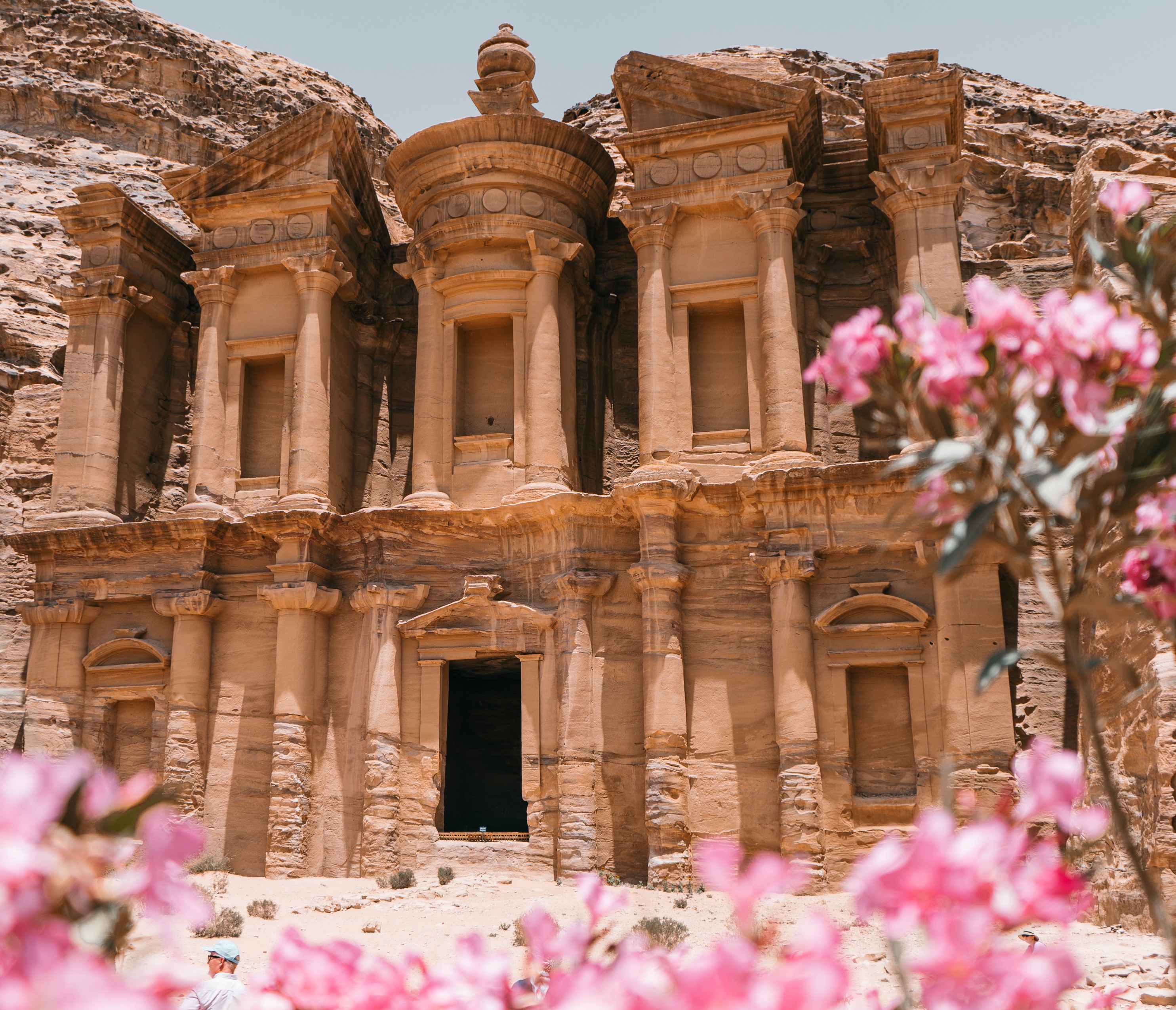The Rose City of Petra is considered a historical religious artistic masterpiece that immortalized the genius of the Nabataeans. It was their capital and achieved in their time an unparalleled political, commercial, artistic and cultural presence.
Since 1985, Petra has been listed as a UNESCO World Heritage Site, and in 2007 it was named among the Seven Wonders of the World. It is considered one of the richest and largest archaeological sites in the world, located amidst a red sandstone landscape.
Petra is a place of religious importance, as it was mentioned in the Bible/Old Testament because it was part of the path that Moses took on the journey of the Exodus. It also contains the shrine of the Prophet Aaron, west of the city, and is distinguished by its white dome.
Petra was discovered by the Swiss traveler Burkhard in 1812. He says that the local Bedouins told him about the Tomb of Aaron and Wadi Musa.
Regarding the introduction of Christianity into Petra, historical sources say that the kings of Petra were interested in digging their graves and the temples of their gods in the pink rock that characterized their mountains and decorated them with beautiful carvings.
Christianity entered Petra from the beginning of its spread, and when everyone converted to Christianity, its residents turned a number of their graves that they had dug into churches.
During the Byzantine era, Petra was an episcopal center, and the tombs were converted into actual churches ten years ago. The cathedral church was found, named after the Blessed Lady, the Most Holy and Glorious Mother of God, Mary, the Most Pure.
The structure of the church was made of marble and its floor was decorated with mosaics. A room was found near it that was an archive of documents written in the Greek language. Recently, ten churches were discovered and excavations are still continuing.
But the fifth-century Byzantine cathedral was only discovered in 1990 after Petra was added to the list of Christian historical sites.
During his visit to Petra, the tourist collects the masterpieces of art, civilization, beauty, and religious history. He begins his visit to Petra by entering the Siq, which is a Syriac word meaning a narrow passage between the pink rocks and the main entrance to the city. On both sides of it, a canal was dug to supply the city with water. At the end of the Siq, the tourist sees the Pharaoh’s treasury, which is a tomb. It may have belonged to the Nabataean king Aretas III (84-56 BC), as well as the Roman amphitheater, which could accommodate more than three thousand people.
On the opposite side of the amphitheater is a group of tombs carved into the rock, and the altar is located between the Pharaoh’s treasury and the Roman amphitheater. As for Qasr al-Bint, it was a structure built by the Nabataeans in the first century BC in honor of the god of evil. As for the monastery, it was a pagan structure that the Christians later converted into a church.

